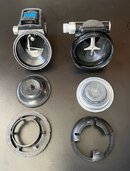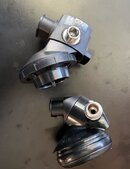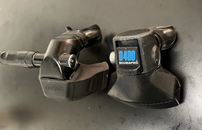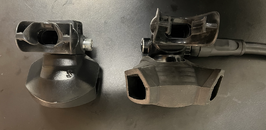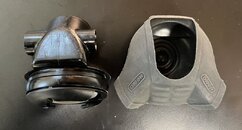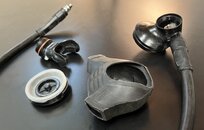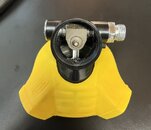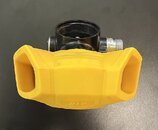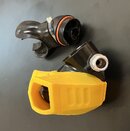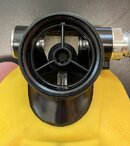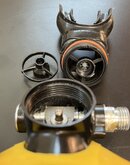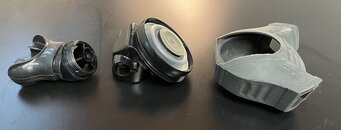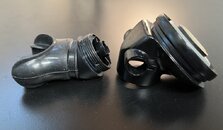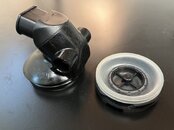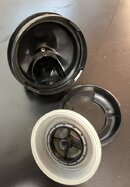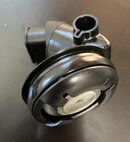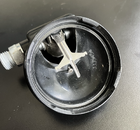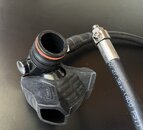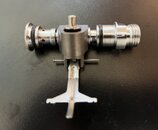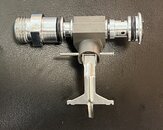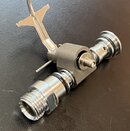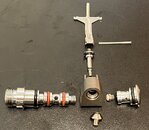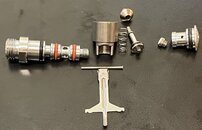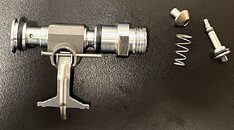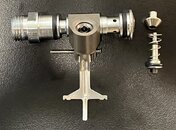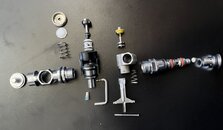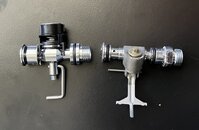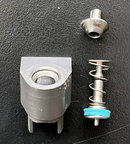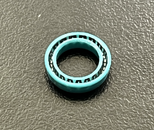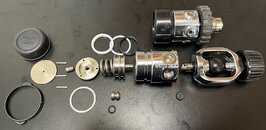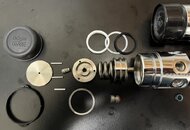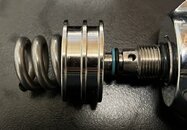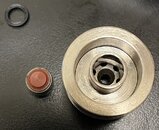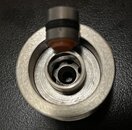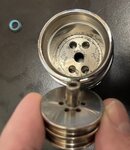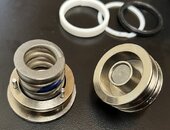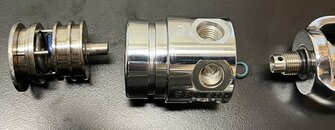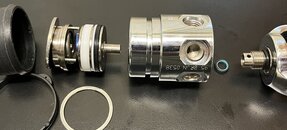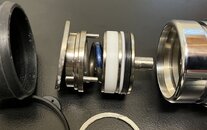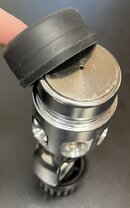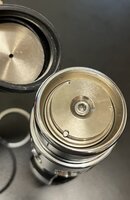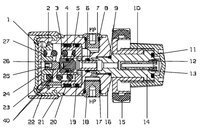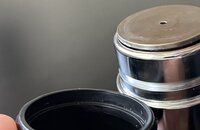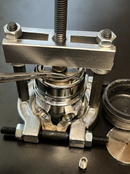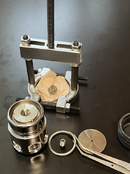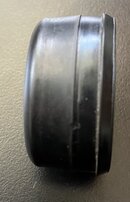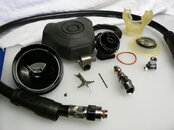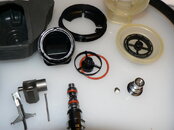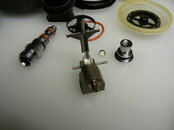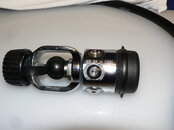Geo7
Contributor
Hi all, for a long time I was curious about the Dräger Shark, and dove it on a full mask once, but never bought one. The parts kits were outrageously expensive and I kept a note with a warning to not pick one up cheap that needed service. Then my friend @Golan68 (who does his own maintenance on his german cars, motorbikes and Scubapro Pilot) bought one and took it apart. We discovered typically quirky but impressive german engineering (think rear-engined sports cars). So… I bought a few regs and this thread is the result. @Golan68, @rsingler and @lexvil got their hands on some Shark regs as well, and our goal with this project was to learn about this amazing reg design and share our findings for your entertainment and perhaps for reg manufacturers to revisit some ideas that Dräger applied. I am initiating this thread, but @Golan68 kickstarted this and the rest of the team contributed a lot and will chime in. It’s a discovery in progress.
The Dräger Shark is a discontinued reg, with part support dropped at the end of last year. Some retailers may carry parts at outrageous prices like 155 Euro for a 1st stage kit. Dräger is a german company that we here know for their military LAR-V rebreathers and the recreational Dolphin rebreather that was an abandoned attempt to make recreational divers happy. Dräger's business is in the medical market, and they supply breathing equipment and other safety gear to firefighters. Dive gear is a small part of their business. The Dräger Shark was intended to be used mainly with the Dräger Panorama Nova Dive full face mask by law enforcement divers, military, commercial and rescue divers. In short, well funded agencies that could afford the maintenance. The Shark has been replaced by the SECOR 7000 which is a more conventional end-barrell balanced design.
Why are we interested in the Dräger Shark? Well, the 2d stage seems a close relative of our beloved Scubapro D400. Both have a center-balanced valve and co-axial exhaust membrane. And it is “Made in Germany”. So expectations were high.
The Dräger Shark is a discontinued reg, with part support dropped at the end of last year. Some retailers may carry parts at outrageous prices like 155 Euro for a 1st stage kit. Dräger is a german company that we here know for their military LAR-V rebreathers and the recreational Dolphin rebreather that was an abandoned attempt to make recreational divers happy. Dräger's business is in the medical market, and they supply breathing equipment and other safety gear to firefighters. Dive gear is a small part of their business. The Dräger Shark was intended to be used mainly with the Dräger Panorama Nova Dive full face mask by law enforcement divers, military, commercial and rescue divers. In short, well funded agencies that could afford the maintenance. The Shark has been replaced by the SECOR 7000 which is a more conventional end-barrell balanced design.
Why are we interested in the Dräger Shark? Well, the 2d stage seems a close relative of our beloved Scubapro D400. Both have a center-balanced valve and co-axial exhaust membrane. And it is “Made in Germany”. So expectations were high.



